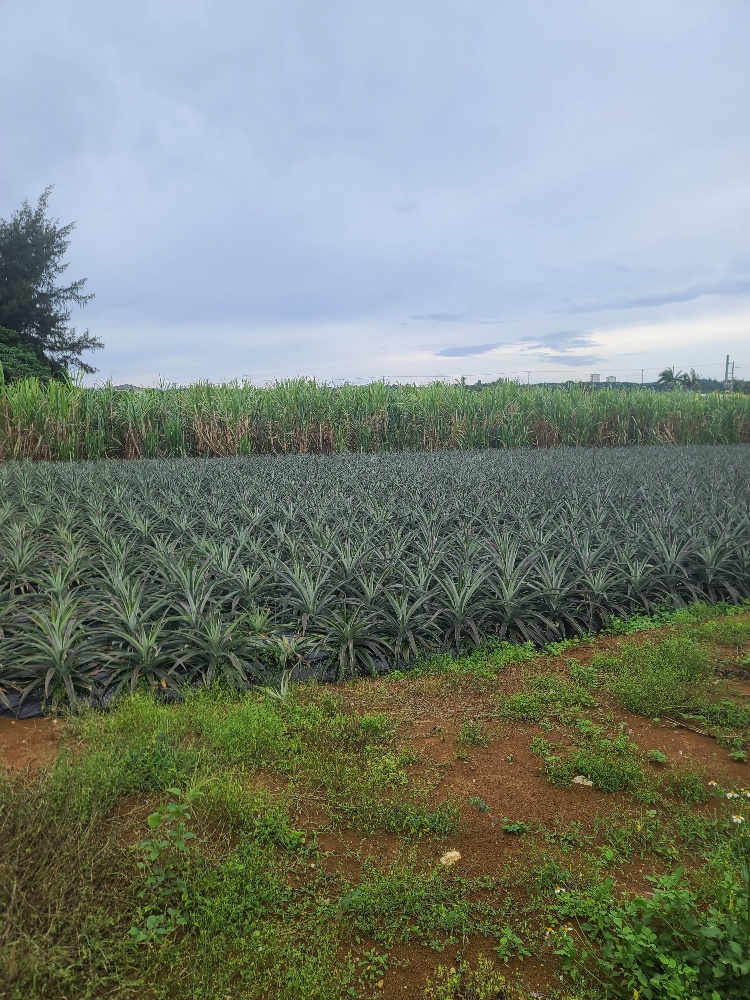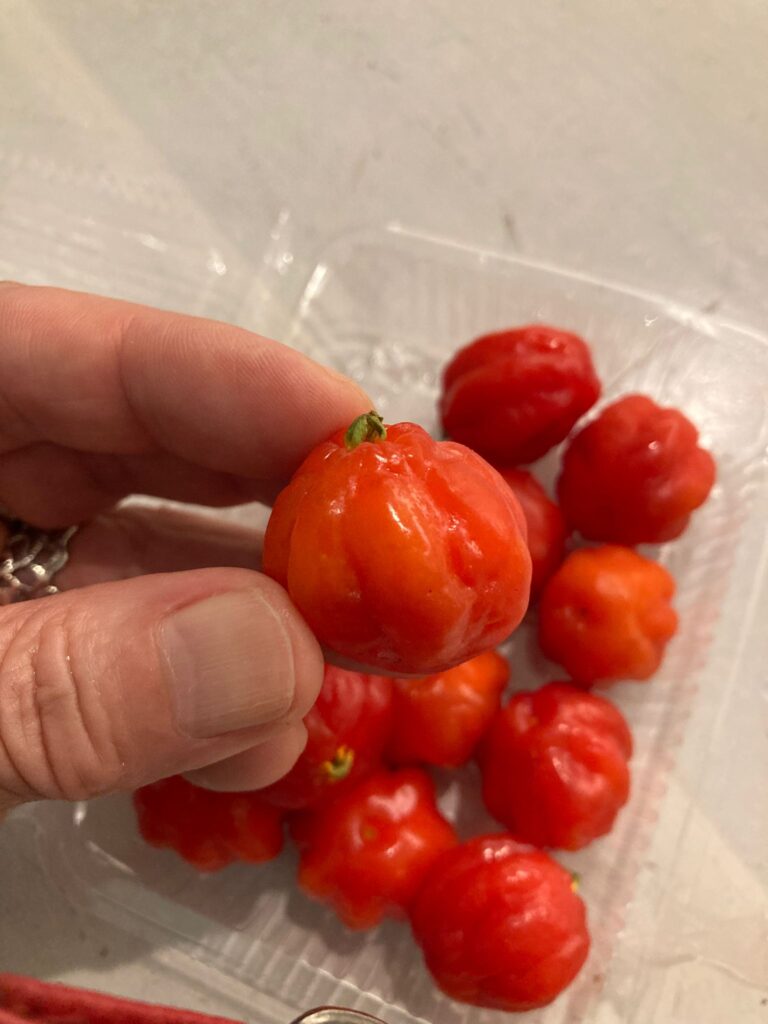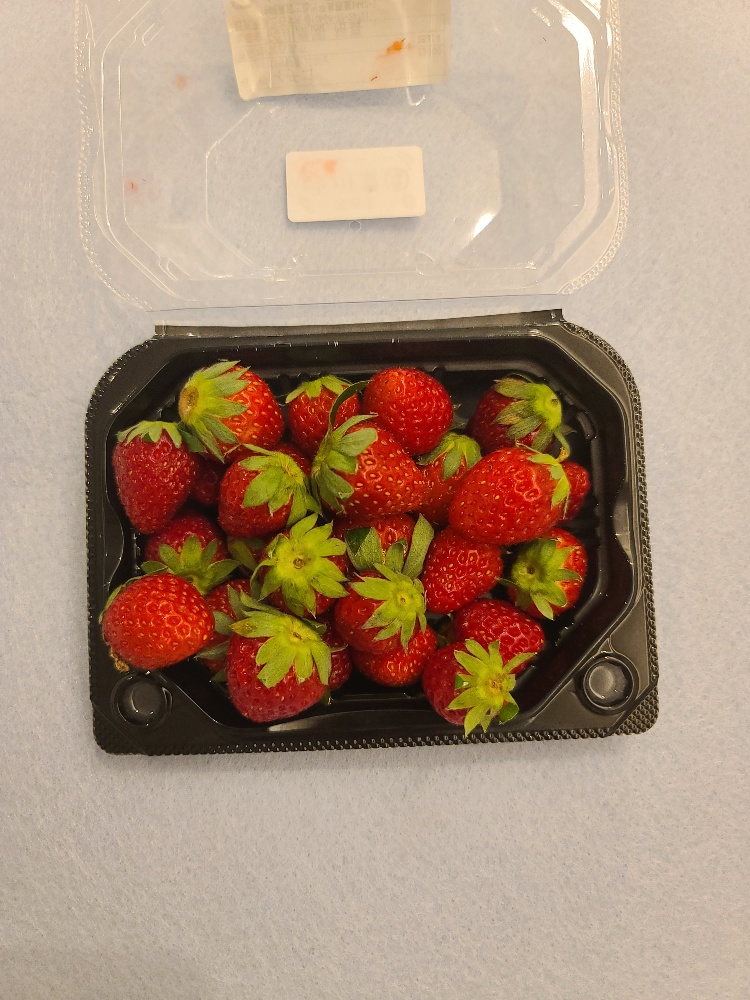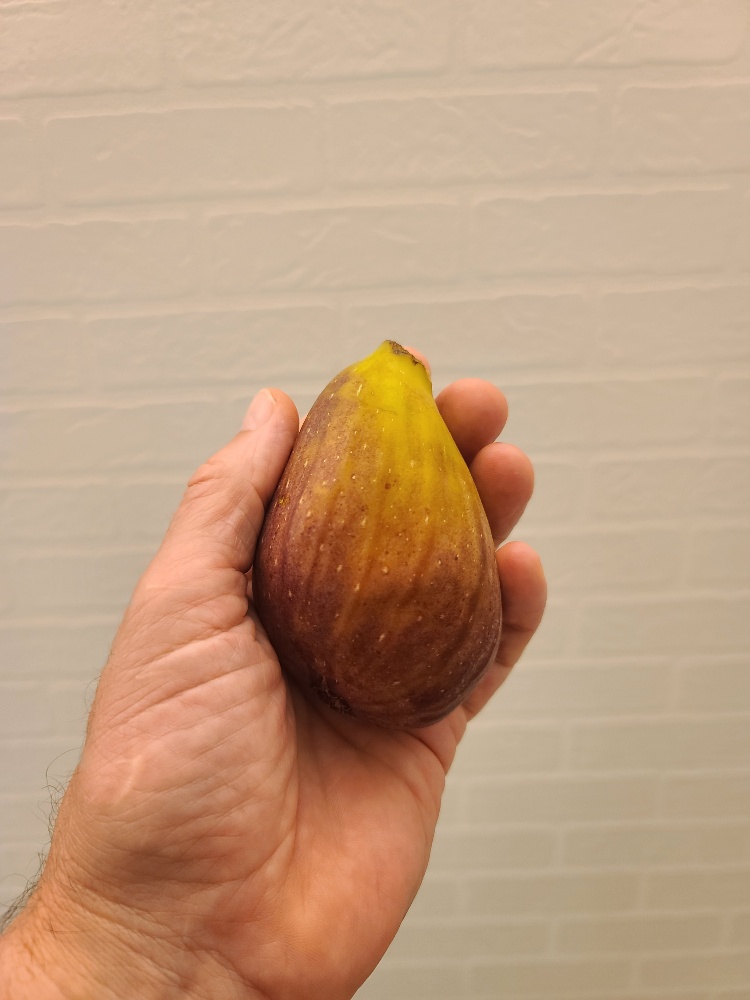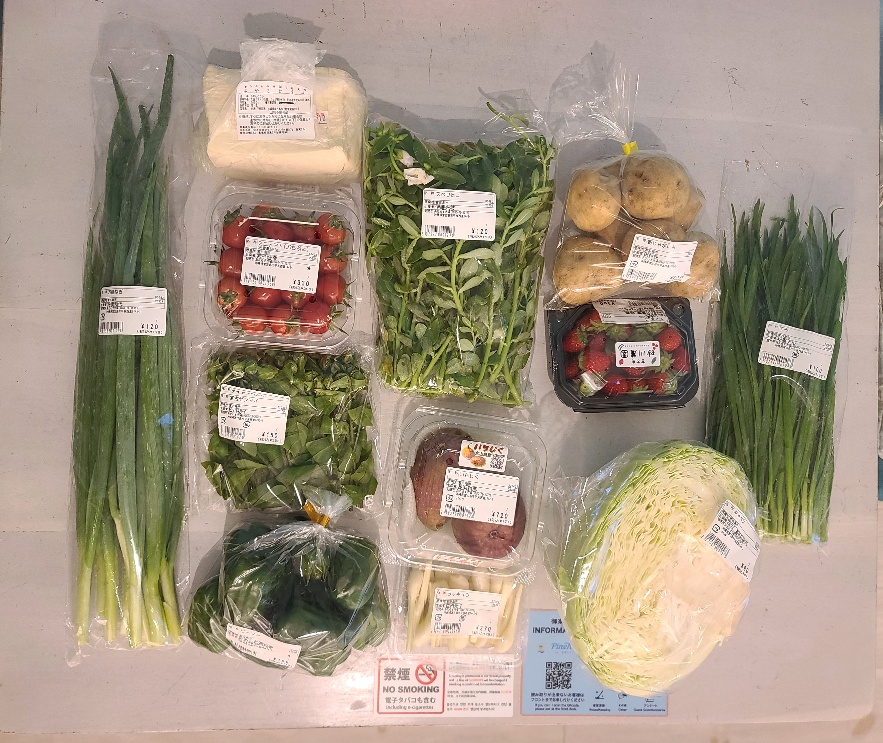Miyako Island is located nearly 200 miles south of the Island of Okinawa, but it is still within the Okinawa Prefecture, (a Prefecture is a designated, governed region of Japan). The island is 160 square kilometers, taking about 45 mins to drive along country roads, from one end to the other.
The Island is well suited to large scale agriculture with most of the land under cultivation. Sugar cane and tobacco look to be the largest crops in area planted, but there are also many other unique crops, some of which are only grown here on the island.
Of those smaller crops there are pineapples, bananas, mangos, passion fruits, dragon fruits, tomatoes, fogs, Brazilian Cherries, strawberries and numerous green leafy row crop plants. The soils look to be very fertile, deep soils which can be deep ripped easily without a lot of rocks in the fields. There are many green houses on the island as well: large commercial green houses producing crops for market.
One modern concern I see is that the large scale commercial agriculture lends itself to standard commercial agricultural practices, meaning the dependance and use of synthetic sprays and fertilizers. While touring the island I could see the tractors paired up to their spray rigs, and large fertilizer tanks scattered across some fields. My impression is that the island’s agriculture developed during the 50’s and 60’s when heavy pesticide usage was considered the modern way to produce large crops. It is also true that agriculture in the tropics has a difficult time with pests and plant diseases. The field houses, spray rigs and farm workers all look strikingly familiar to other agriculture areas where chemical farming is the norm.
There are reports already of the agricultural runoff damaging the rich coastal ocean waters. The coral reefs already severely impacted by rising ocean temperatures have to also deal with the chemical and sediment runoff. This coastal run off has negative implications as well to the local island’s seaweed farming industry.
Miyako Island is well known for it’s significant seaweed production, in the coastal waters. Umibudo (Sea Grapes) and Mozuku are the primary crops and let me tell you they are very healthy and delicious! These seaweeds are cultivated and harvested in coastal waters and aquaculture farms, and are a main staple of the local diet as well as exported to Okinawa and the greater islands of Japan. To loose this wonderful source of nutrition from agricultural or human contamination would be a real shame.
Already a few large scale resort hotels and golf courses are here on Miyako Island (the golf courses being another big source of chemical contamination for the island and waters) and the forecast is for this type of development to continue to grow. At some point heavy chemical farming will bump up against resort hotels catering to visitors seeking a healthy environment. It would be great to see Miyako island begin to shift towards less chemical usage and towards more sustainable farming. It is such a paradise here in the middle of the vast ocean. A proud island with thousands of years of history and traditions. For the health of this wonderful island and the young children growing up here, I hope Miyako island can make the shift to a more sustainable farming community. Count me in to help!
